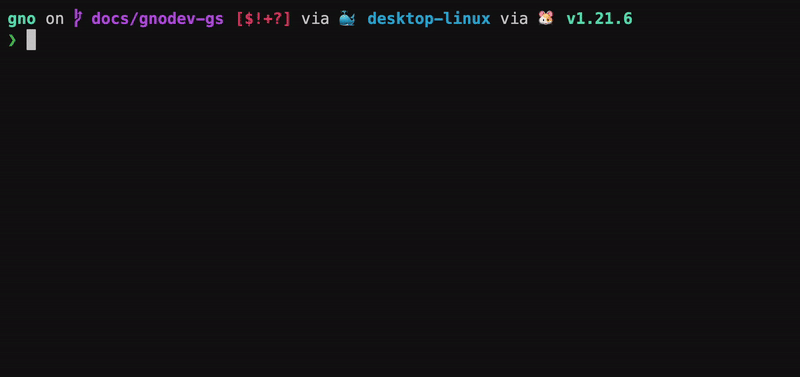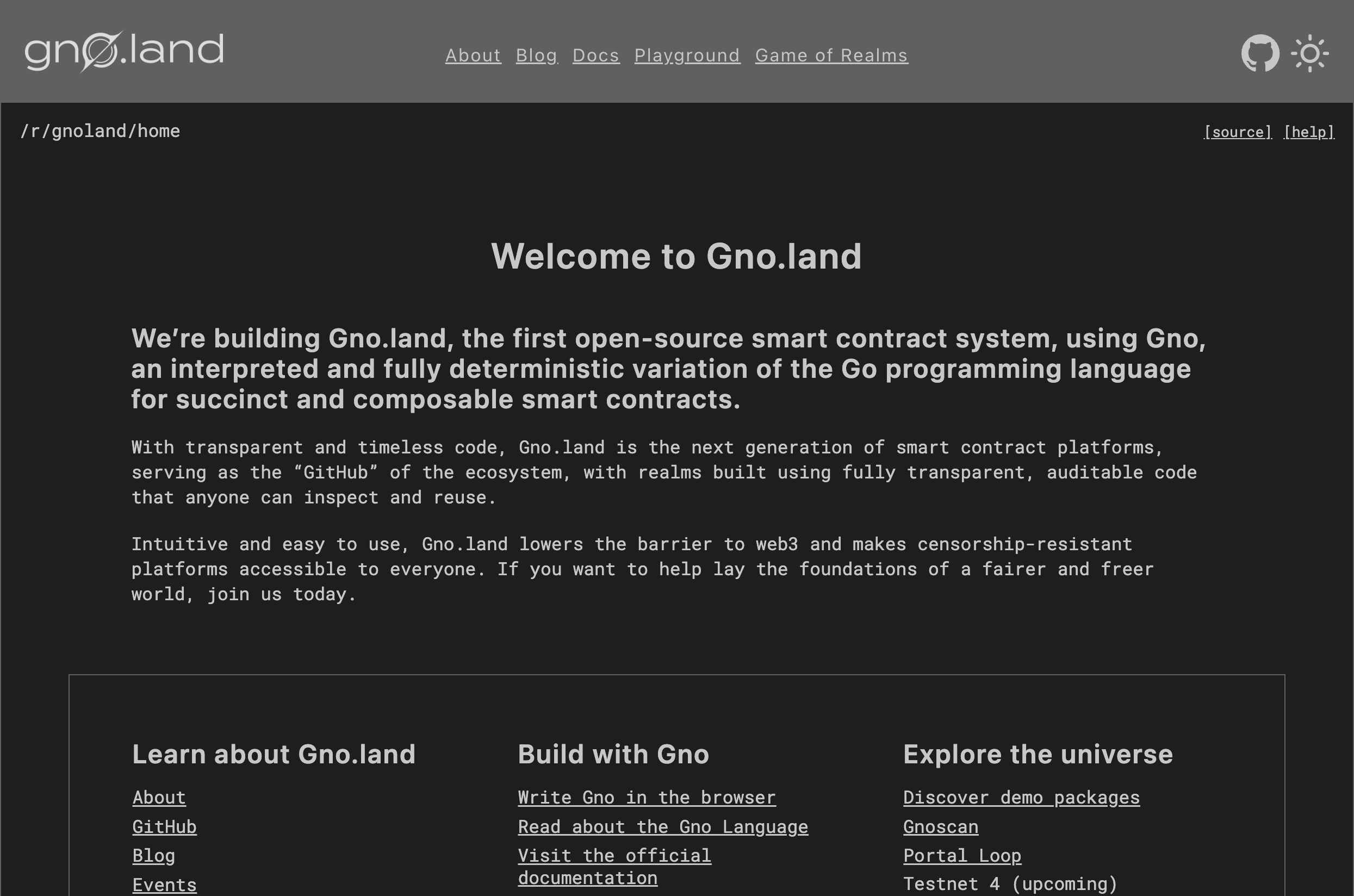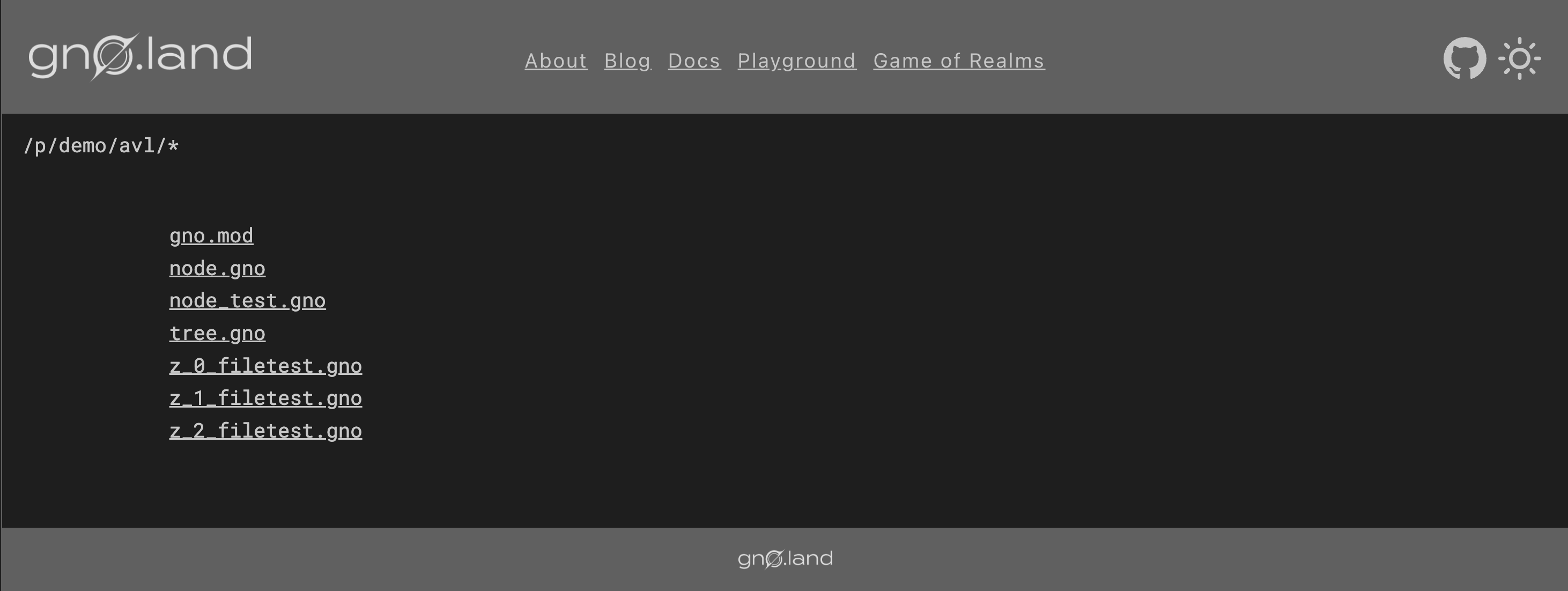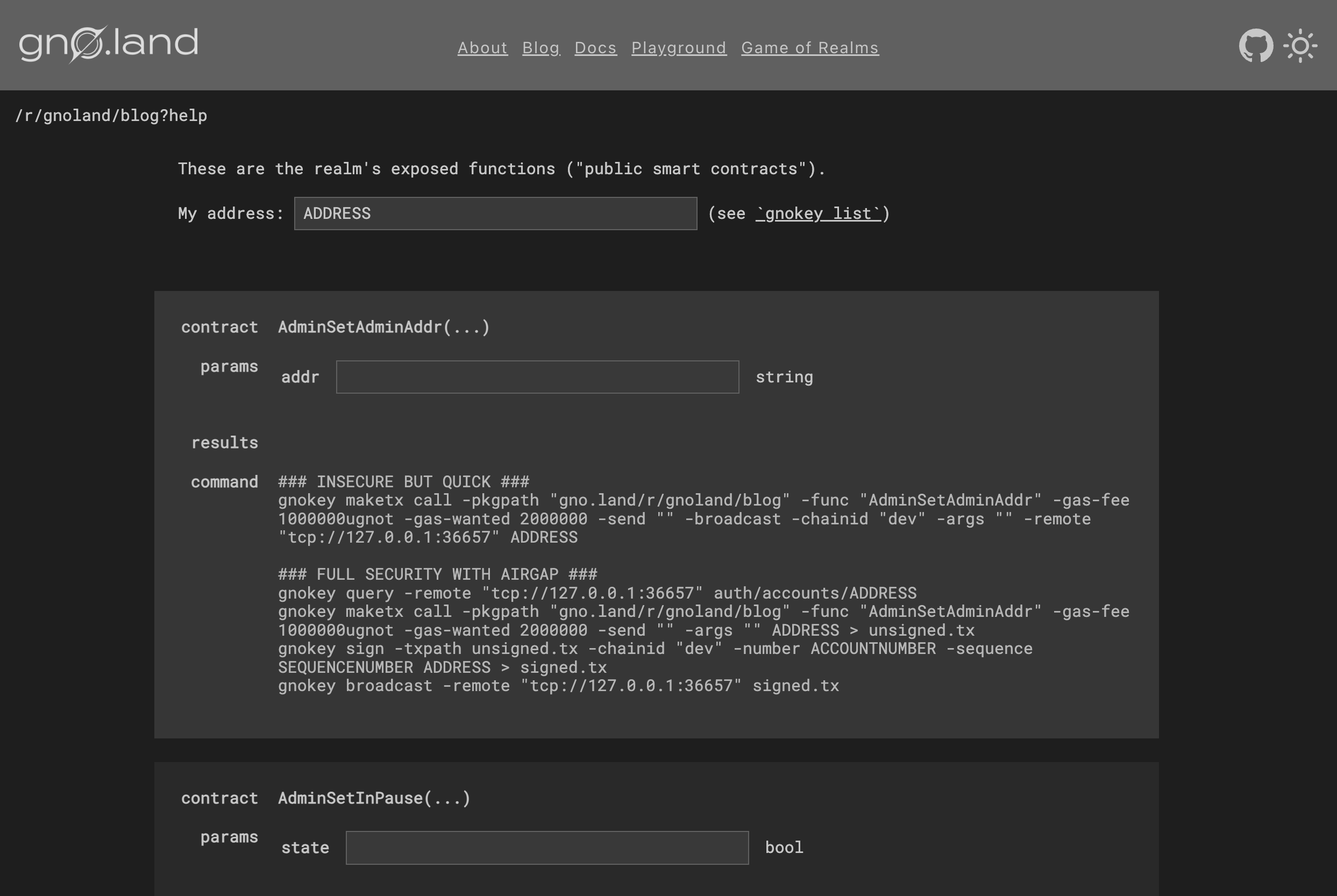Browsing gno.land
Overview
In this tutorial, you will learn how to browse realms
and packages deployed to a gno.land chain.
You will understand how the Render method is utilized to achieve realm state
visibility, and you will learn how to easily access realm APIs.
Prerequisites
gnodevinstalled. Reference the Local Setup guide for steps
1. Start gnodev
To browse Gno source code, we need two components:
- a running
gno.landnode, - a gno.land source code viewer, like
gnoweb
Luckily, gnodev comes prepackaged with both. To start, simply run gnodev in
your terminal.
gnodev will start an in-memory node, as well as a gnoweb server:

gnodev remembers the folder where it was installed, and loads the
examples/ subfolder by default. By visiting
http://localhost:8888, you will be able to see the
gno.land home page:

2. Browsing gno.land
Package source code
Packages in gno.land usually have names resembling gno.land/p/<name>. Since
packages do not contain state, only their source code can be viewed on-chain. To
learn more about packages, check out the Packages
concept page.
Let's take a specific example: the avl package, deployed at gno.land/p/demo/avl.
To access the source code of the avl package, we can append the /p/demo/avl
to our browser URL (from the homepage).
The final URL for the avl package source could be viewable at
http://127.0.0.1:8888/p/demo/avl,
if we followed default setup params, as we did in this guide.

From here, we can open any source code file of the deployed on-chain package and inspect its API.
Realm source code & state
In contrast to Packages, Realms in gno.land usually have names resembling
gno.land/r/<name>.
Realms do contain state, and in addition to being able to view their source
code on-chain, users can also view their internal state representation in the
form of the Render() output. To learn more about realms, please check out the
Realms concept page.
We can browse the realm Render() method output and source code in our browser.
For example, the gnoland/blog realm is deployed at gno.land/r/gnoland/blog.
To view the internal realm state of the blog realm, we can append the
/r/gnoland/blog to our browser URL (from the homepage).
The final URL for the blog realm internal state could be viewable at
http://127.0.0.1:8888/r/gnoland/blog,
if we followed default setup params, as we did in this guide.

Internal realm state does not have to be exposed through the Render() method
of the realm, as it is not a requirement for deploying a Realm.
Additionally, to view the source code for the realm, we have two options:
- append
/to the full realm path -http://127.0.0.1:8888/r/gnoland/blog/ - click on the
[source]button in the top-right corner

Finally, the [help] button takes us to the realm help page, where you will
be able to see the user-facing API of the realm.

This page will allow you to easily generate gnokey commands for interacting
with the realm in question.
Conclusion
That's it 🎉
You have successfully inspected the source code of a package and realm, and seen
the on-chain state of the blog app. You have also learned about the [help] page
that gnoweb provides.